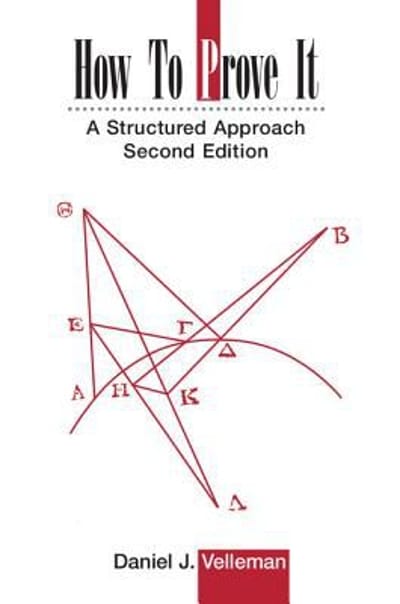Question
12.The quantitative data set under consideration has roughly abell-shaped distribution. Apply the empirical rule to answer the following question. A quantitative data set has mean
12.The quantitative data set under consideration has roughly abell-shaped distribution. Apply the empirical rule to answer the following question.
A quantitative data set has mean 21 and standard deviation 1. Approximately what percentage of the observations lie between 19 and 23?
Approximately nothing % of the observations lie between 19 and 23.
(Type an integer or a decimal. Round to one decimal place asneeded.)
13. The quantitative data set under consideration has roughly abell-shaped distribution. Apply the empirical rule to answer the following question.
The data set has size 30.
Approximately how many observations lie within two standard deviations to either side of themean?
Approximately nothing observations lie within two standard deviations to either side of the mean.
(Round to the nearest whole number asneeded.)
14.The quantitative data set under consideration has roughly abell-shaped distribution. Apply the empirical rule to answer the following question.
A quantitative data set of size 80 has mean 40 and standard deviation 5. Approximately how many observations lie between 30 and 50?
Approximately nothing observations lie between 30 and 50.
(Round to the nearest whole number asneeded.)
14 ( Chapter 4)
An incomplete contingency table is provided. Use this table to complete the following.
a. Fill in the missing entries in the contingency table.
b. Determine P(C1), P(R2), and P(C1 & R2).
c. Construct the corresponding joint probability distribution.
_ C1 C2 Total ( *= Represents missing number that needs to be filled)
R 1 2 * 16
R2. * 6 *
Total * * 40
15.Identify P(C1|R1).
P(C1|R1)= ?
A joint probability distribution is shown below. Determine both P(C1|R1) and P(R1|C1).
(Type an integer or a decimal. Round to three decimal places asneeded.)
"" C1 C2 C3 P(Rj) ""
R1 0.26 0.09 0.13 0.48 ""
R2 0.12 0.25 0.15 0.52 ""
P(Ci) 0.38 0.34 0.28 1 ""
16.According to a researchcorporation, 42% of women in a particular region suffer from holidaydepression, and, from a populationreport, 55% of adults in this region are women. Find the probability that a randomly selected adult in this region is a woman who suffers from holiday depression. Interpret your answer in terms of percentages.
Select the correct choice below and fill in the answer boxes to complete your choice.
(Type integers or decimals. Do notround.)
Key ( ? ) = insert answer for probability & ( ?%)= insert insert for percentage.
A.The probability is ( ?) This means that ( ? %) of all women suffer from holiday depression.
B.The probability is (? )This means that( ? % ) % of all adults who suffer from holiday depression are women.
C.The probability is ( ? )This means that ( ? % ) of women in this region suffer from holiday depression.
D.The probability is ( ? ). This means that ( ? %) of all adults in this region are women who suffer from holiday depression.
Two cards are drawn at random from an ordinary deck of 52 cards. Determine the probability that both cards are hearts if
a. the first card is replaced before the second card is drawn.
b. the first card is not replaced before the second card is drawn.
a. The probability that both cards are hearts if the first card is replaced before the second card is drawn is ( ? )
(Round to three decimal places asneeded.)
15.Below is a joint probability distribution for the members of a state congress by legislative group and political party. The"other" category includes Independents and vacancies.
. Determine PP1, PC1, and PP1&C1.
PP1=
PC1=
(Type an integer or adecimal.)
Democratic, P1 0.364 0.106 0.47
Republican, P2 0.434 0.087 0.521
Other, P3 0.004 0.005 0.009
P(Cj) 0.802 0.198 1
19The events A1 and A2 are mutually exclusive and exhaustive. The table on the right provides P(A1), P(A2), P(B|A1) and P(B|A2).
J P(Aj) P(B|Aj)
1 0.2 0.7
2 0.8. 0.4
a. Use the rule of total probability to findP(B).
b. ApplyBayes's rule to find P(A1|B).
a.P(B)= ?
(Type an integer or a decimal. Do notround.)
20.There are many choices to make when buying a new car. For a specific model of a newcar, choices areavailable, amongothers, for roof (6), exterior color (8), seatfabric/color (5), interior trim (4), and wheels (4). How many possibilities are therealtogether, taking into account choices for the five aforementioneditems?
There are ( ? ) different possibilities. (Type a wholenumber.)
21.At a moviefestival, a team of judges is to pick thefirst, second, and third place winners from the 54 films entered. How many possibilities arethere?
There are ( ? ) possibilities for picking thefirst, second, and third place winners.
(Type a wholenumber.)
Step by Step Solution
There are 3 Steps involved in it
Step: 1

Get Instant Access to Expert-Tailored Solutions
See step-by-step solutions with expert insights and AI powered tools for academic success
Step: 2

Step: 3

Ace Your Homework with AI
Get the answers you need in no time with our AI-driven, step-by-step assistance
Get Started


